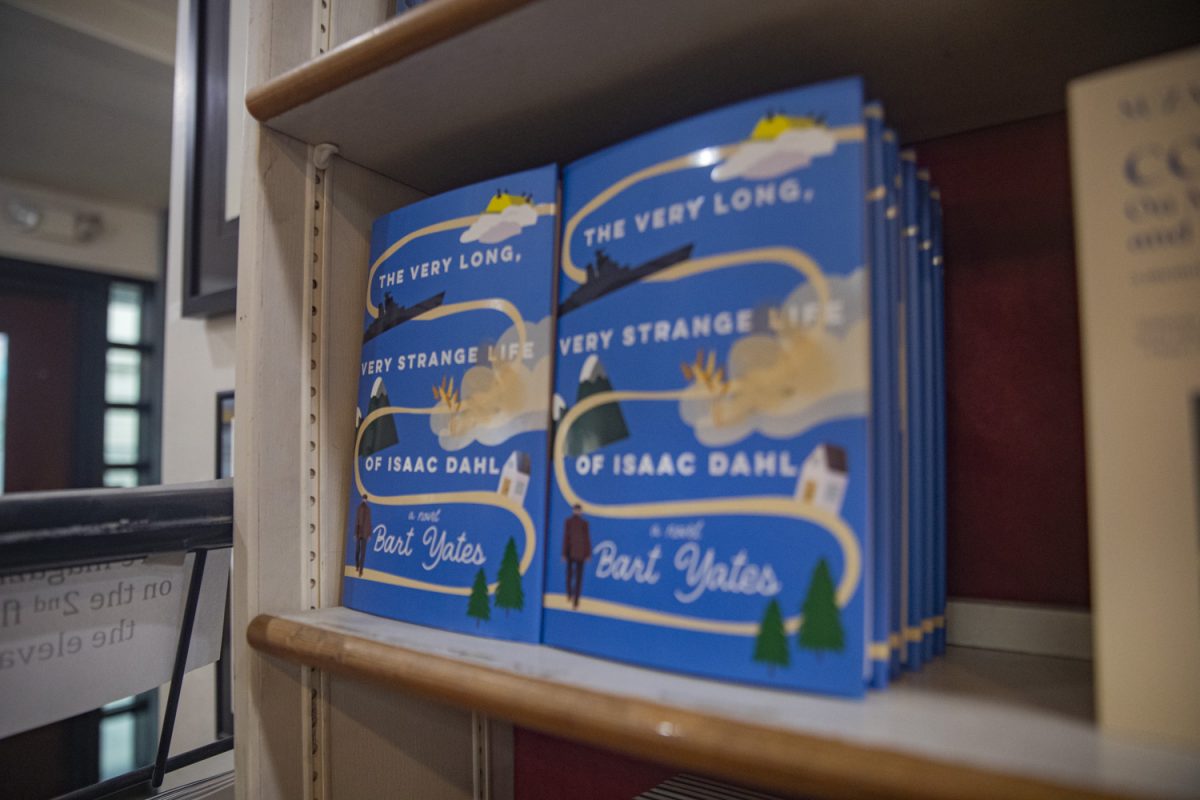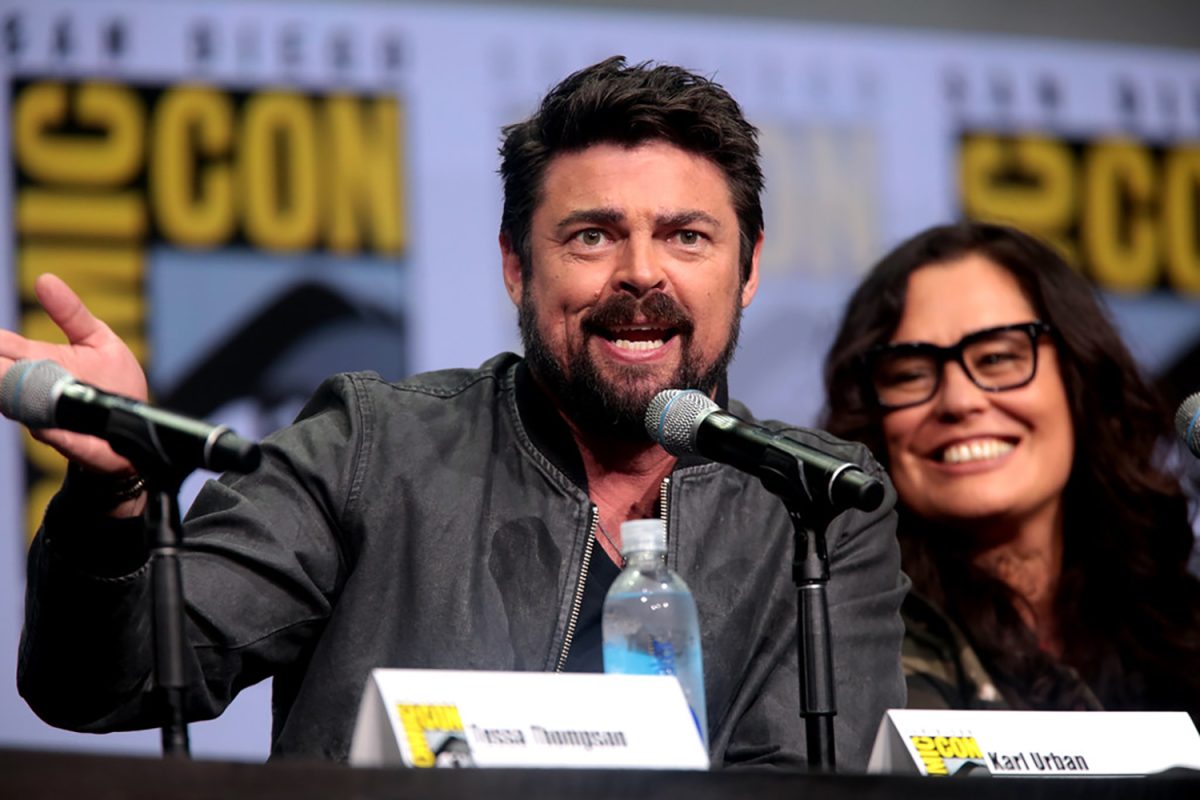Theories of alternate realities have been around for centuries. Most were concerned with aliens and extraterrestrials, but J.R.R. Tolkien took a different approach when he created his own world in his four books, The Hobbit and The Lord of the Rings trilogy.
The Hobbit takes place in Middle-Earth, a world filled with hobbits, dwarves, elves, wizards, and dragons. Bilbo, an unsuspecting young hobbit, is swept into this fantastic world by a wizard named Gandalf. Traveling with 13 dwarves, Bilbo works to save the lost Dwarf Kingdom of Erebor.
The movie adaptation of The Hobbit will be released at midnight today, the highly anticipated prequel of the three Lord of the Rings movies from director Peter Jackson. The Hobbit: An Unexpected Journey is the first of three installments. The other films will be released December 2013 and July 2014.
A representative of the Sycamore 12 at the Sycamore Mall said it will not run any promotional incentives for the movie, but the cinema expects a large turnout.
That seems a safe assumption, given the hype lingering from The Lord of the Rings. Millions have read and loved The Hobbit and eagerly anticipate the film. Included among those Tolkien lovers is University of Iowa freshman Alyssa Hitchcock.
“Of all the Tolkien books, this was my favorite, so I’m excited to see how it fits from the book,” she said.
She has a special interest in seeing the movie the day it is released, she said.
“It was supposed to come out a weekend later [than it is now], but then I found out it was being released on my birthday, so I nerded-out a little,” Hitchcock said. “It’s really exciting to see it on my birthday. My dad and I share a birthday, so it’ll be cool to see it with him.”
Hitchcock, a native of Los Angeles, had hoped to be able to be home at midnight to see the film.
“It would have been very cool to see the movie as I was turning 19, but I’ll still get to see it on my birthday at least,” she said.
Another Tolkien fan, University of Iowa Associate Professor Lori Branch, taught a new first-year seminar at the UI this year. The course focused on Tolkien, his books, and his relationships with other authors of his day.
When asked about the appeal of the story, she cited Tolkien’s attention to detail.
“Detail is the heart of his theory of sub-creation,” Branch said. “It has to seem so real that you get involved in it and forget that it isn’t real. It helps them believe in the story and enter into it.”
Tolkien wrote about sub-creation extensively. According to him, the world, created by man, must be consistent and believable, containing elements of reality. Above all, people need to be pulled into the world and interested.
“Tolkien himself was really concerned with what draws people to fantasy,” she said. “He answered his own questions in [his essay] ‘On Fairy-Stories.’ Usually, people who like fantasy are charged with escapism; he says fantasy is a theological act — it gives hope. You are involved in sub-creation. You create a world that is interesting and vivid and that people can step into.”
Tolkien so hoped for people to step into his world that he went so far as to create an entire language.
The Elvish language, learned by the actors who spoke it, has become increasingly popular over the years. It can be translated online.
“He [Tolkien] thinks fantasy is good because it offers many positive views of escape,” Branch said. “It acknowledges all the bad things in our world and shows how we can make them better. It’s not escapism; it’s consolation, hope, and creativity.”
The book and story are world-renowned, but how does the movie compare? Branch said the movie remains fairly loyal. However, there are some obvious differences, she noted.
“I thought there was a lot really good about it,” she said. “It really satisfied a lot of fans. They were satisfied with the fidelity of the cast. When serious Tolkien fans criticize the movies, they are criticizing the loss of idealized characters. The filmmakers kept the unrealistic, magical world but made the characters darker, more ‘realistic.’ They lose some of the noble, self-sacrificing aspects of characters such as Aragon.”
She believes this difference was designed to make the characters more relatable to audiences. They are able to see themselves in the characters if they have imperfections, she said.
There are so many prevailing themes in Tolkien’s novels that it seems fairly easy to find something to relate to.
“The Hobbit felt more like children’s literature, where The Lord of the Rings is this epic saga,” Branch said. “The Hobbit takes up central issues of children’s literature. Bilbo goes on this quest with dwarves who are very different from him. So Bilbo has to learn how to enter that more adult dwarf, while keeping part of his child-like nature. He goes back to his life if the Shire and remains child-like. He kept the ring more by accident than by greed. He treasures what is best about hobbit existence.”
This focus on one central figure sets this story apart from Tolkien’s others.
“The Hobbit is a very different book,” Branch said. “So where The Lord of the Rings is more about the big picture, The Hobbit is really focused on the making of one individual who can play a significant role in the undoing of the evil of the ring.”
Tolkien takes a great effort to make Bilbo likable and compelling, she said.
“Bilbo is not consumed by greed or the desire for wealth or power,” she said. “He was the right person to hold the ring.”
Members of the public will be able to decide for themselves as they watch Bilbo’s first steps toward possessing the ring.






